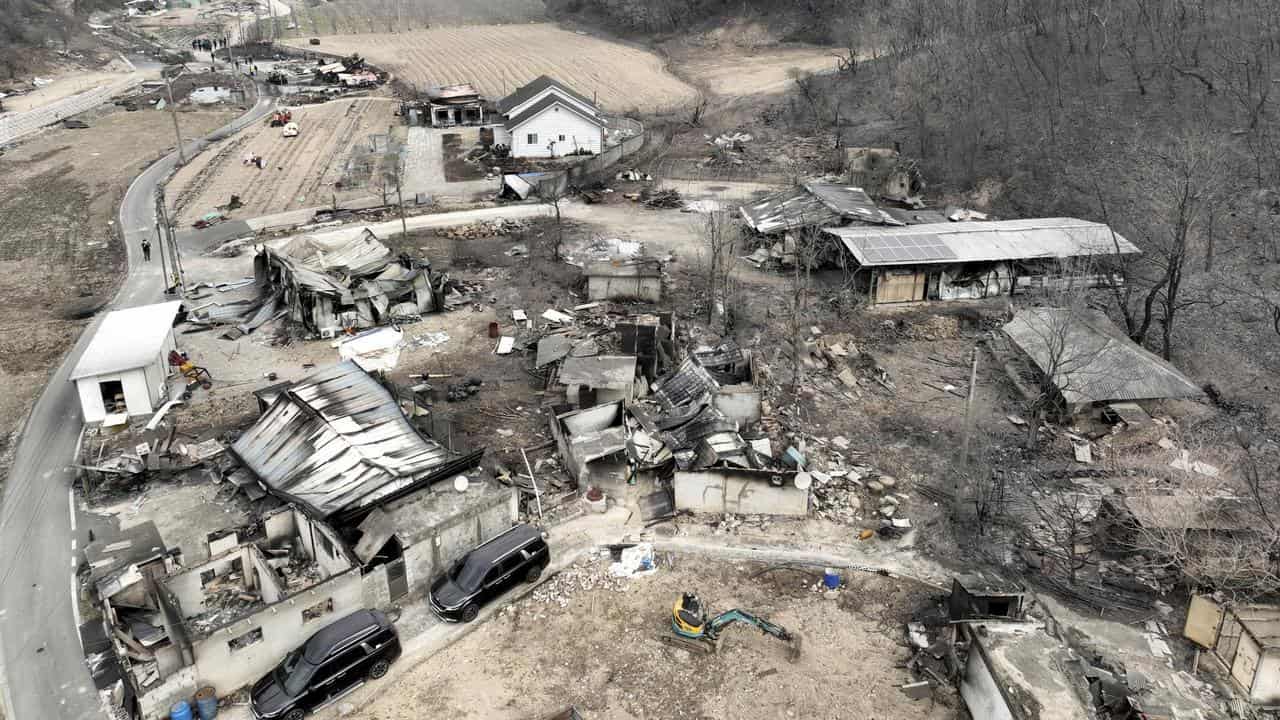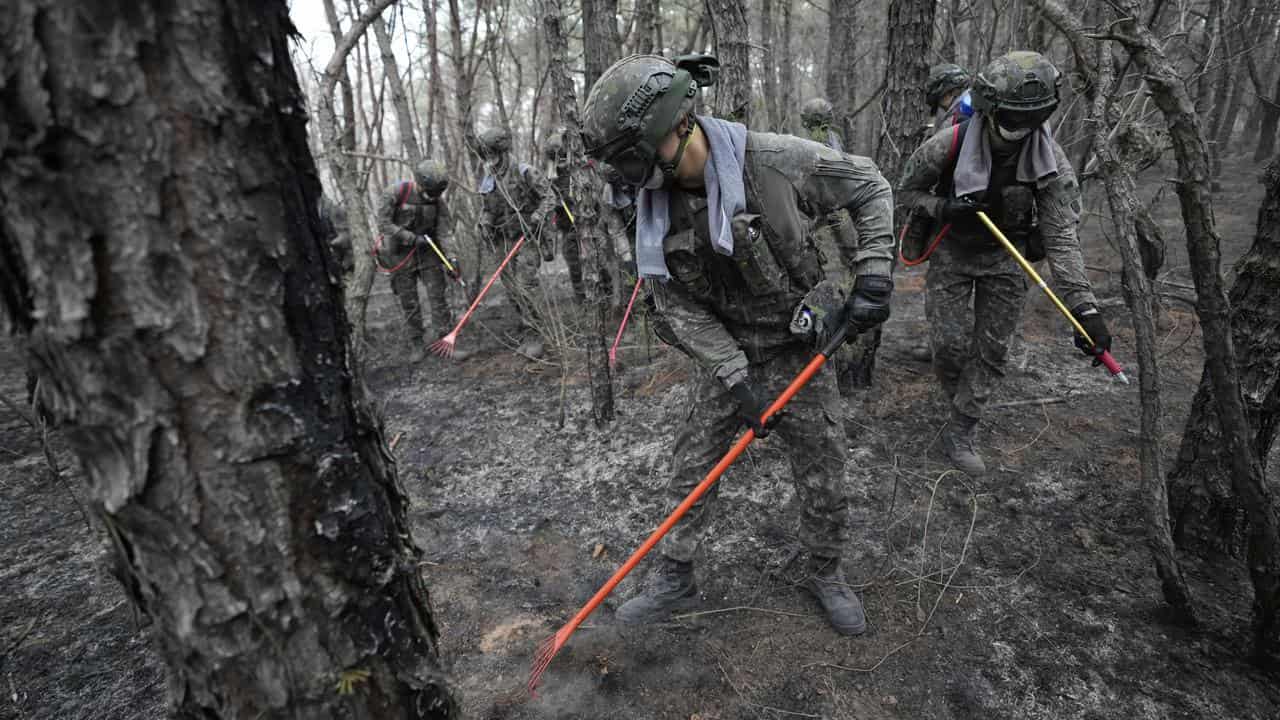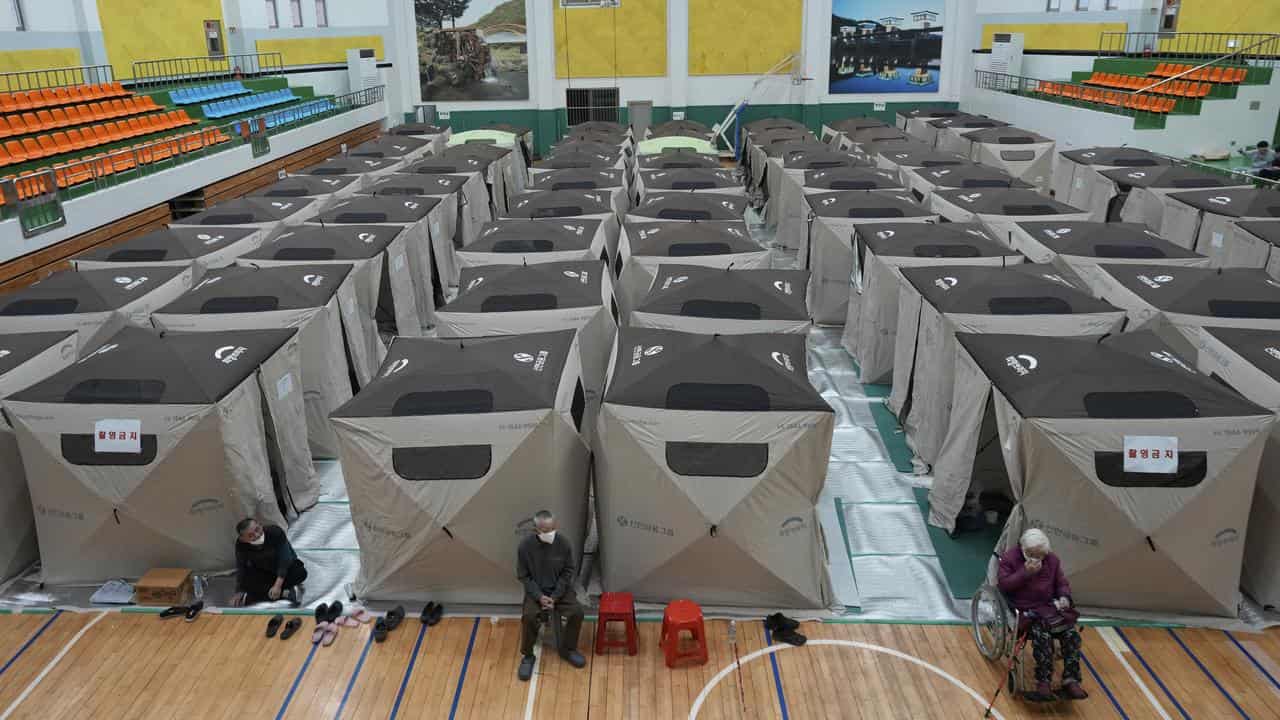
Wildfires raging in South Korea have doubled in size in 24 hours as authorities call the blazes the country's worst natural fire disaster, with at least 27 people killed and historic temples incinerated.
More than 33,000 hectares have been charred or are still burning in the largest of the fires that began in the central Uiseong county, making it the biggest single forest fire in South Korea's history.
The previous record was 24,000 hectares in a March 2000 fire.

"We are nationally in a critical situation with numerous casualties because of the unprecedented rapid spread of forest fires," Acting President Han Duck-soo told a government response meeting.
The military has released stocks of aviation fuel to help keep firefighting helicopters flying to douse flames across mountainous regions in the southeast of the country where fires have been burning for almost a week.
More than 120 helicopters have been deployed in three regions battling the blazes, the safety ministry said.
South Korea relies on helicopters to fight forest fires because of its mountainous terrain.
A helicopter pilot died on Wednesday after crashing while trying to tackle a blaze.
The wildfires that originated in Uiseong have been moving rapidly eastward, spreading almost to the coast, carried by gusty winds and with dry conditions aggravating the situation.
The Uiseong fire began spreading quickly on Wednesday, reaching the coastal county of Yeongdeok 51km away in just 12 hours, said Won Myung-soo, director of satellite imagery analysis for the national forestry service.
While the meteorological agency has forecast some rain for the southwest, precipitation is expected to be less than 5mm for most of the affected areas, with many areas still waiting for rain.

"The amount of rain is going to be small so it doesn't look like it'll be big help in trying to extinguish the fire," Korea Forest Service Minister Lim Sang-seop said.
Experts have said the Uiseong fire showed extremely unusual spread in terms of its scale and speed, and that climate change was expected to make wildfires more frequent and deadly globally.
Higher temperatures amplified by human-caused climate change contributed to the existing seasonally dry conditions, "turning dry landscapes into dangerous fire fuel" in the region, the Climate Central group, an independent body of scientists and researchers, said in a report.
The wildfires have carved a trail of devastation through an area equivalent to about half the area of Singapore, ravaging everything in their path, including historic temples and homes in the mountainous forest regions of North Gyeongsang province.
Teams of firefighters are on standby to protect the UNESCO World Heritage sites of Hahoe Village and the Byeongsan Confucian Academy in the city of Andong if a blaze jumps the stream that flows around them.
The picturesque folk village has traditional Korean houses, many with thatched roofs, while the Confucian academy dates back more than 450 years.
The fires have already badly damaged other historic sites, including much of Gounsa Temple in Uiseong, which was built in 681.
"The buildings and remains of what Buddhist monks have left more than 1300 years are now all gone," said Deungwoon, the head of the Gounsa Temple.




